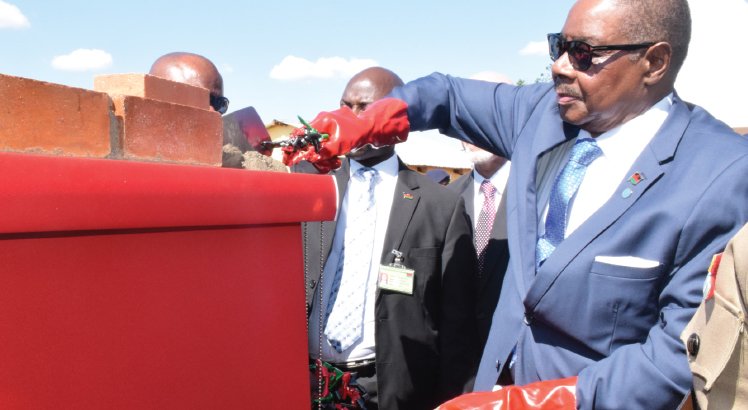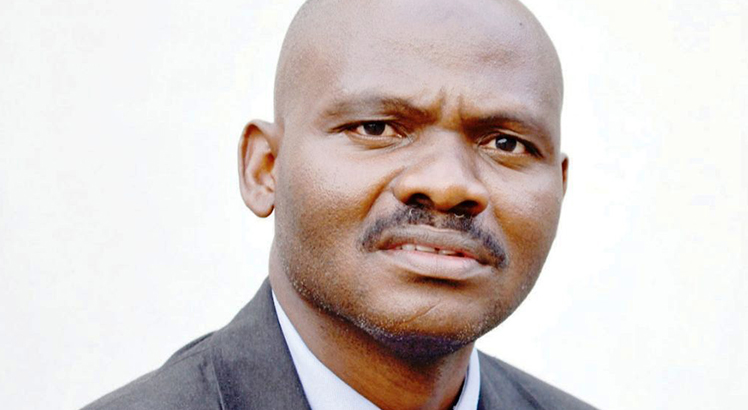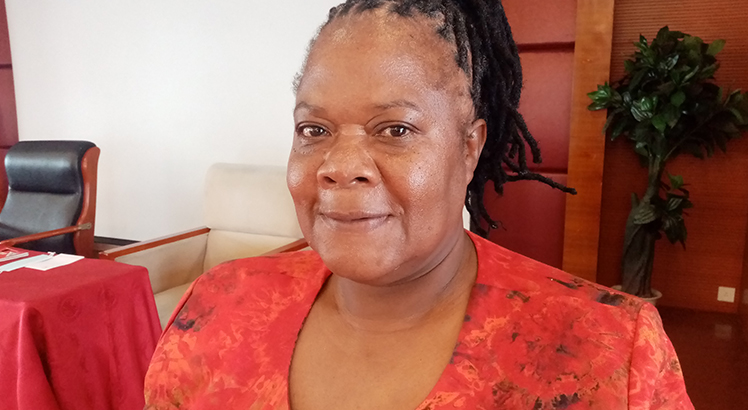Bureaucracy and land ownership wrangles have left Malawi on the verge of failing to fully utilise the $90 million (about K76.5 billion) United States of America-funded project to construct 250 secondary schools.
The Secondary Education Expansion for Development (Seed) project is a four-year programme launched in 2018, but extended by a year to end in March 2022.
By completion deadline day, Malawi had constructed 16 new schools and expanded or refurbished 30 existing ones.
In total, 96 new classrooms in the 30 existing overcrowded urban secondary schools were supposed to be constructed and 200 new community day secondary schools (CDSS) in rural areas in every district. It is these in rural areas that have yet to start.
Minister of Education Agnes NyaLonje blamed the delay to construct the schools on land identification, land assessment and procurement processes.
Former president Peter Mutharika launches the project
at Kawale CDSS on October 8 2019 in this file photo
But education policy experts and activists yesterday said bureaucracy and failure in project planning, politicisation and failure to see the need in rural areas were negatively affecting implementation of the project.
In a Ministerial Statement delivered in Parliament last week, NyaLonje also admitted that construction works in the Seed project are behind the proposed schedule for completion.
She cited unresolved land conflicts where some chiefs are volunteering land without consent from landowners, as one of the contributing factors.
NyaLonje said: “Landowners are demanding compensation, but according to the memorandum of understanding [MoU] signed between the Malawi and US governments, land for the Seed project school construction is to be volunteered by respective communities.
“Difficulties in obtaining land offer documentation where the identified sites sit on church land and stakeholders wishing to take the development to their areas of influence regardless of the set criteria.”
The minister said under Seed Rural Group One, 38 out of 40 sites qualified and procurement processes were completed. She said she was hopeful that construction will begin this month.
NyaLonje said: “Group 2 has 54 sites, including the two which were moved from Group1. Three sites that is one at Khungulu which replaced Khola in Blantyre, Chikowa in Chiradzulu and another at Chankhozi in Kasungu still have some outstanding land-related issues.”
But the delay has not amused education policy experts and activists.
Educationist Steve Sharra, speaking in an interview yesterday, questioned how planning was done to the extent that the project is facing challenges due to land issues.
He said: “The planning management aspect of it is where they did not do a good job because when you are starting a project you need to think it in a thorough way. You need to be as consultative as possible.
“You want to involve all stakeholders because the project has multiple components. You’ve got other issues requiring other stakeholders like the community, other ministries like Lands, experts at surveying. So, we need to be asking ourselves a question as to the extent to which our expertise in project planning.”
In a separate interview, Civil Society Education Coalition coordinator Benedicto Kondowe said government needed to remove bottlenecks and bureaucracies affecting the project.
He said: “On the question of procurement, you would realise that the process has dragged far too long because of other competing interests.
“Further, even where government is clear as to where the need is, politicians would want to turn around and benefit where they are coming from or have particular interest. This is an issue that is destroying this country.”
Kondowe said government should have applied the principle of equity, by also starting constructing schools in rural areas at an earlier stage, owing to the fact that pass rates in national examinations are poor in rural areas due to many challenges including space.
He said” “Evidence is clear of some progress in urban areas, but there is nothing tangible in the rural areas. The status of CDSS in rural areas is very bad, and this project provided a lease of hope for a majority of Malawians in rural areas for them to realise the right to quality education.”
Yesterday, the US Embassy Public Diplomacy Section said the US government, through USAid, was committed to successfully implement the Seed programme.
“Our commitment to the project, in partnership with the ministry, remains steadfast,” the section said in response to The Nation query on the implication of the delays to construct the schools under the programme.
According to the Education Sector Performance Report 2021, Malawi faces spacing challenge in school with a yawning deficit of 2 827 classrooms.
The report says all 34 education districts have a backlog of classroom construction and rehabilitation. In order to create the required classroom space, the sector would need to construct 2 172 classrooms and rehabilitate 1 423 classrooms across the country.
But NyaLonje remains upbeat.
She said in the 2021/22 fiscal year, the ministry constructed 851 classroom blocks and in the coming 2022/23 year, it will construct 3 514 classrooms.
This year, the education sector has been allocated K462.2 billion from K395.5 billion in the 2021/22 fiscal year.
The post 250 secondary schools project stalls appeared first on The Nation Online.
 Moni Malawi
Moni Malawi 

